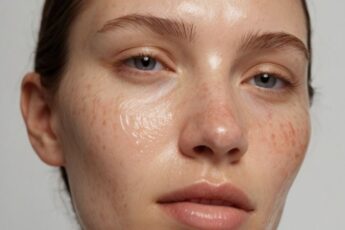Diane Lehto is a skincare expert and dermal therapist at the Sydney based, The Sharp Clinics who took us through a deep and knowledgeable conversation all things hyperpigmentation.
We know how annoying can be these pigmentation spots all over our face but sometimes we don’t exactly know how to deal with them so Diane breaks it through easy and simple for you. Hopefully, by the end of the article, you’ll understand better how to treat your pigmentation in skin and eventually get an even tone.
Q&A with Diane Letho, Dermal Therapist
Q
What is pigmentation?
The word ‘pigmentation’ refers to any pigment, or colour, in the skin; essentially we all have varying levels of pigmentation, based on how dark or light our complexion is. The pigment that gives our skin colour is called melanin.
Q
Why pigmentation appears?
Hyperpigmentation is the overproduction of melanin. This results in dark spots on our face or body, so hyperpigmentation can refer to any darkening of the skin. The greatest risk factors of hyperpigmentation are sun exposure and inflammation, as both are responsible for the overproduction of melanocytes. Sunspots and photo-aging are caused by long term exposure to UV light. This usually presents as an uneven skin tone in our late thirties or early forties – the dark spots can be larger than freckles and appear anywhere on the body that has been exposed to the sun. Post-inflammatory hyperpigmentation is commonly caused by trauma; for example, acne, skin infections, or insect bites. Dark spots are often left behind, where irritation was present.
Q
What are the common types of pigmentation?
Hyperpigmentation and melasma are the most common forms of troublesome pigmentation that we see. Hyperpigmentation is the overproduction of melanin. This results in dark spots on our face or body, so hyperpigmentation can refer to any darkening of the skin. The greatest risk factors of hyperpigmentation are sun exposure and inflammation, as both are responsible for the overproduction of melanocytes. Melasma presents flat, brown, or grey patches, and can be caused by sun exposure, hormonal changes, certain medications, and thyroid issues. Melasma predominantly affects women and is known as ‘the pregnancy mask’ as it often forms on the cheeks and forehead during pregnancy.
Q
What is the best Hyperpigmentation treatment?
We have a stable of treatments for treating pigmentation. Often, patients will undergo Fraxel laser to reduce hyperpigmentation and then maintain their results and prevent further hyperpigmentation using a strategic combination of microneedling, LED, and peels.
Q
There is an ingredient that we should avoid in case of pigmentation?
It can differ from patient to patient; some products that are good for aging and pigmentation can cause more pigmentation when used incorrectly, or in high concentrations, so rather than totally avoiding specific ingredients, it’s about working with a skilled clinician who knows your skin and can point you towards the right formulations.
Q
Any tips to prevent pigmentation in skin before it’s too late?
Diligent sun protection is the best defense against hyperpigmentation. High-quality pigment inhibiting products can also reduce and regulate the production of melanin by inhibiting tyrosinase, an enzyme responsible for melanin production. Specific skin care products can help to control pigmentation, but they are only effective if you are also protecting the skin against trauma, such as sun damage or acne.
Skincare and treatments work synergistically to produce the best results. Often we prep and strengthen the skin prior to laser treatments using strategically chosen skincare, and then after Fraxel has done the heavy lifting, reducing the hyperpigmentation, we also place our patients on a pigment-inhibiting product.
Q
Are there any types of skin most prone to develop pigmentation?
Light skin types are more prone to pigmentation caused by solar (sun) exposure. Olive skin types can be more prone to melasma. What treatments would you recommend for pigmentation sufferers? We love Fraxel laser because it addresses multiple skin concerns, including hyperpigmentation, fine lines, and wrinkles, pore size, and skin texture.
When selecting treatment modalities, we look at the amount of hyperpigmentation the patient has, their current skin quality as well as their skin goals. We also factor in the amount of downtime they are willing to have, as well as their budget. Fraxel can be used on most skin types. Our laser patients range from farmers in their 70s who want to lift off actinic keratosis and other sun damage, to prevent undergoing further skin cancer surgery – right through to mums in their 20s who have developed melasma due to hormonal changes.








